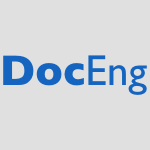Stem vocabulari$ (all stems)
91 papers:
 CAiSE-2015-KoschmiderUHO #process
CAiSE-2015-KoschmiderUHO #process- Revising the Vocabulary of Business Process Element Labels (AK, MU, AH, AO), pp. 69–83.
 CHI-2014-HeoGL #using
CHI-2014-HeoGL #using- Expanding touch input vocabulary by using consecutive distant taps (SH, JG, GL), pp. 2597–2606.
 CHI-2014-HuangTTTYCHC #named #using
CHI-2014-HuangTTTYCHC #named #using- TouchSense: expanding touchscreen input vocabulary using different areas of users’ finger pads (DYH, MCT, YCT, MLT, YTY, LWC, YPH, MYC), pp. 189–192.
 CHI-2014-KovacsM #learning
CHI-2014-KovacsM #learning- Smart subtitles for vocabulary learning (GK, RCM), pp. 853–862.
 DUXU-TMT-2014-BergerHE #design #interactive #prototype #towards
DUXU-TMT-2014-BergerHE #design #interactive #prototype #towards- Towards a Vocabulary of Prototypes in Interaction Design — A Criticism of Current Practice (AB, MH, ME), pp. 25–32.
 HCI-AIMT-2014-MehlerBL #gesture #human-computer
HCI-AIMT-2014-MehlerBL #gesture #human-computer- Comparing Hand Gesture Vocabularies for HCI (AM, TvdB, AL), pp. 81–92.
 LCT-TRE-2014-AlmazovaK #approach #student
LCT-TRE-2014-AlmazovaK #approach #student- Computer Assisted Individual Approach to Acquiring Foreign Vocabulary of Students Major (NA, MK), pp. 248–257.
 ICEIS-v3-2014-SilvaGS #case study #gesture #interactive #process
ICEIS-v3-2014-SilvaGS #case study #gesture #interactive #process- Gesture Vocabulary for Natural Interaction with Virtual Museums — Case Study: A Process Created and Tested Within a Bilingual Deaf Children School (LRdS, LSG, LS), pp. 5–13.
 ICPR-2014-PuigcerverTV #keyword #query
ICPR-2014-PuigcerverTV #keyword #query- Word-Graph-Based Handwriting Keyword Spotting of Out-of-Vocabulary Queries (JP, AHT, EV), pp. 2035–2040.
 KDD-2014-TagamiHTOTT
KDD-2014-TagamiHTOTT- Filling context-ad vocabulary gaps with click logs (YT, TH, YT, SO, KT, AT), pp. 1955–1964.
 DocEng-2013-TomasiV #automation #collaboration #metadata
DocEng-2013-TomasiV #automation #collaboration #metadata- Collaborative annotations in shared environments: metadata, vocabularies and techniques in the digital humanities (DH-CASE 2013) (FT, FV), pp. 283–284.
 ICDAR-2013-DjeddiSSE #question #representation
ICDAR-2013-DjeddiSSE #question #representation- Codebook for Writer Characterization: A Vocabulary of Patterns or a Mere Representation Space? (CD, IS, LSM, AE), pp. 423–427.
 ICDAR-2013-FeildL #recognition
ICDAR-2013-FeildL #recognition- Improving Open-Vocabulary Scene Text Recognition (JLF, EGLM), pp. 604–608.
 ICDAR-2013-FielS #identification #retrieval #using #visual notation
ICDAR-2013-FielS #identification #retrieval #using #visual notation- Writer Identification and Writer Retrieval Using the Fisher Vector on Visual Vocabularies (SF, RS), pp. 545–549.
 ICDAR-2013-HamdaniMN #composition #recognition #using
ICDAR-2013-HamdaniMN #composition #recognition #using- Open Vocabulary Arabic Handwriting Recognition Using Morphological Decomposition (MH, AEDM, HN), pp. 280–284.
 ICDAR-2013-OpreanLPM #recognition #using #web #word
ICDAR-2013-OpreanLPM #recognition #using #web #word- Using the Web to Create Dynamic Dictionaries in Handwritten Out-of-Vocabulary Word Recognition (CO, LLS, AP, CM), pp. 989–993.
 ICSM-2013-MorenoBHM #debugging #on the #source code
ICSM-2013-MorenoBHM #debugging #on the #source code- On the Relationship between the Vocabulary of Bug Reports and Source Code (LM, WB, SH, AM), pp. 452–455.
 MSR-2013-ButlerWYS #dataset #identifier #named
MSR-2013-ButlerWYS #dataset #identifier #named- INVocD: identifier name vocabulary dataset (SB, MW, YY, HS), pp. 405–408.
 ICML-c1-2013-ZhaiB #infinity #online
ICML-c1-2013-ZhaiB #infinity #online- Online Latent Dirichlet Allocation with Infinite Vocabulary (KZ, JLBG), pp. 561–569.
 ICSE-2013-Guerrouj #comprehension #normalisation #quality #source code
ICSE-2013-Guerrouj #comprehension #normalisation #quality #source code- Normalizing source code vocabulary to support program comprehension and software quality (LG), pp. 1385–1388.
 DRR-2012-RashwanRAAK #2d #pseudo #robust #using
DRR-2012-RashwanRAAK #2d #pseudo #robust #using- A robust omnifont open-vocabulary arabic OCR system using pseudo-2D-HMM (AMR, MR, AAH, SA, AHK).
 CSMR-2012-NonnenI #identification #monitoring
CSMR-2012-NonnenI #identification #monitoring- Identifying Knowledge Divergence by Vocabulary Monitoring in Software Projects (JN, PI), pp. 441–446.
 ICSM-2012-BinkleyLU #concept #normalisation
ICSM-2012-BinkleyLU #concept #normalisation- Vocabulary normalization improves IR-based concept location (DB, DL, CU), pp. 588–591.
 CHI-2012-DearmanT #using
CHI-2012-DearmanT #using- Evaluating the implicit acquisition of second language vocabulary using a live wallpaper (DD, KNT), pp. 1391–1400.
 CIKM-2012-JatowtT #analysis #scalability
CIKM-2012-JatowtT #analysis #scalability- Large scale analysis of changes in english vocabulary over recent time (AJ, KT), pp. 2523–2526.
 ICPR-2012-WangX #generative #image #recognition
ICPR-2012-WangX #generative #image #recognition- Discriminative and generative vocabulary tree for vein image recognition (JW, JX), pp. 3513–3516.
 ICDAR-2011-SunK #retrieval #using #visual notation
ICDAR-2011-SunK #retrieval #using #visual notation- Similar Manga Retrieval Using Visual Vocabulary Based on Regions of Interest (WS, KK), pp. 1075–1079.
 ICSM-2011-DilshenerW #concept #developer
ICSM-2011-DilshenerW #concept #developer- Relating developers’ concepts and artefact vocabulary in a financial software module (TD, MW), pp. 412–417.
 ICSM-2011-LawrieB #identifier #source code
ICSM-2011-LawrieB #identifier #source code- Expanding identifiers to normalize source code vocabulary (DL, DB), pp. 113–122.
 CHI-2011-TrustyT #learning #web
CHI-2011-TrustyT #learning #web- Augmenting the web for second language vocabulary learning (AT, KNT), pp. 3179–3188.
 CIKM-2011-MomtaziK #retrieval
CIKM-2011-MomtaziK #retrieval- Trained trigger language model for sentence retrieval in QA: bridging the vocabulary gap (SM, DK), pp. 2005–2008.
 SAC-2011-MeerBHFK #automation #framework #using #web
SAC-2011-MeerBHFK #automation #framework #using #web- A framework for automatic annotation of web pages using the Google rich snippets vocabulary (JvdM, FB, FH, FF, UK), pp. 765–772.
 WCRE-2010-LawrieBM #normalisation #source code
WCRE-2010-LawrieBM #normalisation #source code- Normalizing Source Code Vocabulary (DJL, DB, CM), pp. 3–12.
 CHI-2010-WangZC #gesture #mobile #named #predict #problem
CHI-2010-WangZC #gesture #mobile #named #predict #problem- SHRIMP: solving collision and out of vocabulary problems in mobile predictive input with motion gesture (JW, SZ, JFC), pp. 15–24.
 ICML-2010-CumminsN #named #recognition #using #visual notation
ICML-2010-CumminsN #named #recognition #using #visual notation- FAB-MAP: Appearance-Based Place Recognition and Mapping using a Learned Visual Vocabulary Model (MJC, PMN), pp. 3–10.
 ICPR-2010-Amores #case study #comparative #multi
ICPR-2010-Amores #case study #comparative #multi- Vocabulary-Based Approaches for Multiple-Instance Data: A Comparative Study (JA), pp. 4246–4250.
 ICPR-2010-WangL #encoding
ICPR-2010-WangL #encoding- Encoding Actions via Quantized Vocabulary of Averaged Silhouettes (LW, CL), pp. 3657–3660.
 ICPR-2010-WojcikiewiczBK #classification #clustering #image
ICPR-2010-WojcikiewiczBK #classification #clustering #image- Enhancing Image Classification with Class-wise Clustered Vocabularies (WW, AB, MK), pp. 1060–1063.
 DRR-2009-HalimaA #concept #recognition #segmentation #using
DRR-2009-HalimaA #concept #recognition #segmentation #using- Simultaneous segmentation and recognition of Arabic printed text using linguistic concepts of vocabulary (MBH, AMA), pp. 1–10.
 ICDAR-2009-KanounSGIAH #approach #recognition
ICDAR-2009-KanounSGIAH #approach #recognition- Affixal Approach versus Analytical Approach for Off-Line Arabic Decomposable Vocabulary Recognition (SK, FS, HG, RI, AMA, JH), pp. 661–665.
 ICDAR-2009-NguyenTB #approach #visual notation
ICDAR-2009-NguyenTB #approach #visual notation- A Symbol Spotting Approach Based on the Vector Model and a Visual Vocabulary (TON, ST, AB), pp. 708–712.
 ICDAR-2009-QuiniouCA #fault #recognition #word
ICDAR-2009-QuiniouCA #fault #recognition #word- Handling Out-of-Vocabulary Words and Recognition Errors Based on Word Linguistic Context for Handwritten Sentence Recognition (SQ, MC, ÉA), pp. 466–470.
 CSMR-2009-AbebeHMTA #evolution #source code
CSMR-2009-AbebeHMTA #evolution #source code- Analyzing the Evolution of the Source Code Vocabulary (SLA, SH, AM, PT, GA), pp. 189–198.
 MSR-2009-MatterKN #debugging #developer #using
MSR-2009-MatterKN #debugging #developer #using- Assigning bug reports using a vocabulary-based expertise model of developers (DM, AK, ON), pp. 131–140.
 CHI-2009-RoudautLG #named
CHI-2009-RoudautLG #named- MicroRolls: expanding touch-screen input vocabulary by distinguishing rolls vs. slides of the thumb (AR, EL, YG), pp. 927–936.
 HCI-NIMT-2009-Yee #difference #gesture #multi
HCI-NIMT-2009-Yee #difference #gesture #multi- Potential Limitations of Multi-touch Gesture Vocabulary: Differentiation, Adoption, Fatigue (WY), pp. 291–300.
 IDGD-2009-BoseS #hypermedia
IDGD-2009-BoseS #hypermedia- The Use of Hypertext as a Vocabulary Acquisition Strategy for English as Second Language Learners (DB, DS), pp. 147–155.
 SIGIR-2009-OlssonO #independence #retrieval #robust #speech
SIGIR-2009-OlssonO #independence #retrieval #robust #speech- Combining LVCSR and vocabulary-independent ranked utterance retrieval for robust speech search (JSO, DWO), pp. 91–98.
 ECIR-2008-AmatiABGG #ad hoc #automation #retrieval
ECIR-2008-AmatiABGG #ad hoc #automation #retrieval- Automatic Construction of an Opinion-Term Vocabulary for Ad Hoc Retrieval (GA, EA, MB, CG, GG), pp. 89–100.
 ICPR-2008-Ilic #recognition #using
ICPR-2008-Ilic #recognition #using- Object labeling for recognition using vocabulary trees (SI), pp. 1–4.
 SIGIR-2008-Diaz #retrieval
SIGIR-2008-Diaz #retrieval- A method for transferring retrieval scores between collections with non-overlapping vocabularies (FDD), pp. 805–806.
 SAC-2008-EinseleIH #independence #recognition #word
SAC-2008-EinseleIH #independence #recognition #word- A language-independent, open-vocabulary system based on HMMs for recognition of ultra low resolution words (FE, RI, JH), pp. 429–433.
 SAC-2008-FariaM #recognition #scalability #speech
SAC-2008-FariaM #recognition #scalability #speech- When a mismatch can be good: large vocabulary speech recognition trained with idealized tandem features (AF, NM), pp. 1574–1577.
 SIGIR-2007-MagalhaesR #image #retrieval #visual notation
SIGIR-2007-MagalhaesR #image #retrieval #visual notation- High-dimensional visual vocabularies for image retrieval (JM, SMR), pp. 815–816.
 SIGIR-2007-MamouRS #detection #independence
SIGIR-2007-MamouRS #detection #independence- Vocabulary independent spoken term detection (JM, BR, OS), pp. 615–622.
 MoDELS-2007-SmialekBNAS #case study
MoDELS-2007-SmialekBNAS #case study- Complementary Use Case Scenario Representations Based on Domain Vocabularies (MS, JB, WN, AA, TS), pp. 544–558.
 MoDELS-2007-SmialekBNAS #case study
MoDELS-2007-SmialekBNAS #case study- Complementary Use Case Scenario Representations Based on Domain Vocabularies (MS, JB, WN, AA, TS), pp. 544–558.
 CSCW-2006-SenLRCFOHR #community #evolution
CSCW-2006-SenLRCFOHR #community #evolution- tagging, communities, vocabulary, evolution (SS, SKL, AMR, DC, DF, JO, FMH, JR), pp. 181–190.
 ICPR-v3-2006-YaoYLJ #algorithm #realtime #recognition #scalability
ICPR-v3-2006-YaoYLJ #algorithm #realtime #recognition #scalability- Real Time Large Vocabulary Continuous Sign Language Recognition Based on OP/Viterbi Algorithm (GY, HY, XL, FJ), pp. 312–315.
 DocEng-2005-KuoSTH #generative #user interface #xml
DocEng-2005-KuoSTH #generative #user interface #xml- Generating form-based user interfaces for XML vocabularies (YSK, NCS, LT, HCH), pp. 58–60.
 ICDAR-2005-KanounAL #approach #recognition #validation #word
ICDAR-2005-KanounAL #approach #recognition #validation #word- Affixal Approach for Arabic Decomposable Vocabulary Recognition: A Validation on Printed Word in Only One Font (SK, AMA, YL), pp. 1025–1029.
 ICDAR-2005-Schambach #performance #recognition #scalability #word
ICDAR-2005-Schambach #performance #recognition #scalability #word- Fast Script Word Recognition with Very Large Vocabulary (MPS), pp. 9–13.
 ECIR-2004-Kamps #documentation #effectiveness #ranking #retrieval
ECIR-2004-Kamps #documentation #effectiveness #ranking #retrieval- Improving Retrieval Effectiveness by Reranking Documents Based on Controlled Vocabulary (JK), pp. 283–295.
 ICPR-v2-2004-MadsenSHL #recognition
ICPR-v2-2004-MadsenSHL #recognition- Pruning The Vocabulary For Better Context Recognition (REM, SS, LKH, JL), pp. 483–488.
 SIGIR-2004-LiuCKG #predict
SIGIR-2004-LiuCKG #predict- Context sensitive vocabulary and its application in protein secondary structure prediction (YL, JGC, JKS, VG), pp. 538–539.
 ICDAR-2003-RyuK #learning #recognition #word
ICDAR-2003-RyuK #learning #recognition #word- Learning the lexicon from raw texts for open-vocabulary Korean word recognition (SR, JHK), pp. 202–206.
 ICDAR-2003-VinciarelliBB #recognition #scalability
ICDAR-2003-VinciarelliBB #recognition #scalability- Offline Recognition of Large Vocabulary Cursive Handwritten Text (AV, SB, HB), p. 1101–?.
 ICPR-v3-2002-GeH #case study #comparative #modelling #recognition #scalability
ICPR-v3-2002-GeH #case study #comparative #modelling #recognition #scalability- A Comparative Study of Several Modeling Approaches for Large Vocabulary Offline Recognition of Handwritten Chinese Characters (YG, QH), pp. 85–88.
 SIGIR-2002-GeyCBL #information management #multi
SIGIR-2002-GeyCBL #information management #multi- Translingual vocabulary mappings for multilingual information access (FCG, AC, MKB, RRL), pp. 455–456.
 SAC-2002-Soderstrom #standard
SAC-2002-Soderstrom #standard- Standardising the business vocabulary of standards (ES), pp. 1048–1052.
 ICDAR-2001-KoerichSS #distributed #problem #recognition #scalability #word
ICDAR-2001-KoerichSS #distributed #problem #recognition #scalability #word- A Distributed Scheme for Lexicon-Driven Handwritten Word Recognition and its Application to Large Vocabulary Problems (ALK, RS, CYS), pp. 660–664.
 ICDAR-2001-MartiB01a #modelling #on the #recognition
ICDAR-2001-MartiB01a #modelling #on the #recognition- On the Influence of Vocabulary Size and Language Models in Unconstrained Handwritten Text Recognition (UVM, HB), pp. 260–265.
 CIKM-2001-FrenchPGP #effectiveness #retrieval
CIKM-2001-FrenchPGP #effectiveness #retrieval- Exploiting A Controlled Vocabulary to Improve Collection Selection and Retrieval Effectiveness (JCF, ALP, FCG, NP), pp. 199–206.
 ICPR-v3-2000-FaruquieMRS #modelling #recognition #scalability #speech #using
ICPR-v3-2000-FaruquieMRS #modelling #recognition #scalability #speech #using- Large Vocabulary Audio-Visual Speech Recognition Using Active Shape Models (TAF, AM, NR, LVS), pp. 3110–3113.
 SIGIR-2000-WoodlandJJJ #documentation #retrieval #word
SIGIR-2000-WoodlandJJJ #documentation #retrieval #word- Effects of out of vocabulary words in spoken document retrieval (PCW, SEJ, PJ, KSJ), pp. 372–374.
 ICDAR-1999-KosmalaWR #clustering #online #recognition #scalability
ICDAR-1999-KosmalaWR #clustering #online #recognition #scalability- Advanced State Clustering for Very Large Vocabulary HMM-based On-Line Handwriting Recognition (AK, DW, GR), pp. 442–445.
 SIGMOD-1999-ChangG #query
SIGMOD-1999-ChangG #query- Mind Your Vocabulary: Query Mapping Across Heterogeneous Information Sources (KCCC, HGM), pp. 335–346.
 CHI-1999-KaratHHK #recognition #scalability #speech
CHI-1999-KaratHHK #recognition #scalability #speech- Patterns of Entry and Correction in Large Vocabulary Continuous Speech Recognition System (CMK, CH, DBH, JK), pp. 568–575.
 SIGIR-1999-LeeD #network
SIGIR-1999-LeeD #network- Context-Sensitive Vocabulary Mapping with a Spreading Activation Network (JL, DD), pp. 198–205.
 ICPR-1998-KosmalaR98a #clustering #online #recognition #scalability #self #using
ICPR-1998-KosmalaR98a #clustering #online #recognition #scalability #self #using- Tree-based state clustering using self-organizing principles for large vocabulary on-line handwriting recognition (AK, GR), pp. 1313–1315.
 ICPR-1998-RigollKW #approach #hybrid #recognition #scalability
ICPR-1998-RigollKW #approach #hybrid #recognition #scalability- A new hybrid approach to large vocabulary cursive handwriting recognition (GR, AK, DW), pp. 1512–1514.
 SIGIR-1998-WechslerMS #documentation #retrieval
SIGIR-1998-WechslerMS #documentation #retrieval- New Techniques for Open-Vocabulary Spoken Document Retrieval (MW, EM, PS), pp. 20–27.
 ICDAR-1997-BazziLMRS
ICDAR-1997-BazziLMRS- Omnifont and Unlimited-Vocabulary OCR for English and Arabic (IB, CL, JM, CR, RMS), pp. 842–846.
 CIKM-1996-LiuHGGP #database #modelling #object-oriented
CIKM-1996-LiuHGGP #database #modelling #object-oriented- Modeling a Vocabulary in an Object-Oriented Database (LmL, MH, HG, JG, YP), pp. 179–188.
 ICDAR-v1-1995-MankeFW #independence #online #recognition #scalability
ICDAR-v1-1995-MankeFW #independence #online #recognition #scalability- NPen/sup ++/: a writer independent, large vocabulary on-line cursive handwriting recognition system (SM, MF, AW), pp. 403–408.
 ICDAR-1993-RoseE #analysis #recognition #scalability #semantics
ICDAR-1993-RoseE #analysis #recognition #scalability #semantics- Semantic analysis for large vocabulary cursive script recognition (TGR, LJE), pp. 236–239.
 HCI-SHI-1993-DillonND #experience #interactive #performance
HCI-SHI-1993-DillonND #experience #interactive #performance- Spoken Language Interaction: Effects of Vocabulary Size and Experience on User Efficiency and Acceptability (TWD, AFN, MJD), pp. 140–145.
 ML-1991-Jones #refinement #using
ML-1991-Jones #refinement #using- Knowledge Refinement Using a High Level, Non-Technical Vocabulary (EKJ), pp. 18–22.
 ML-1989-Keller #compilation #learning #performance
ML-1989-Keller #compilation #learning #performance- Compiling Learning Vocabulary from a Performance System Description (RMK), pp. 482–495.
 ML-1989-MaclinS
ML-1989-MaclinS- Enriching Vocabularies by Generalizing Explanation Structures (RM, JWS), pp. 444–446.
 SIGIR-1973-SaltonY #effectiveness #information retrieval #on the
SIGIR-1973-SaltonY #effectiveness #information retrieval #on the- On the Construction of Effective Vocabularies for Information Retrieval (GS, CTY), pp. 48–60.
 CAiSE-2015-KoschmiderUHO #process
CAiSE-2015-KoschmiderUHO #process CHI-2014-HeoGL #using
CHI-2014-HeoGL #using CHI-2014-HuangTTTYCHC #named #using
CHI-2014-HuangTTTYCHC #named #using CHI-2014-KovacsM #learning
CHI-2014-KovacsM #learning DUXU-TMT-2014-BergerHE #design #interactive #prototype #towards
DUXU-TMT-2014-BergerHE #design #interactive #prototype #towards HCI-AIMT-2014-MehlerBL #gesture #human-computer
HCI-AIMT-2014-MehlerBL #gesture #human-computer LCT-TRE-2014-AlmazovaK #approach #student
LCT-TRE-2014-AlmazovaK #approach #student ICEIS-v3-2014-SilvaGS #case study #gesture #interactive #process
ICEIS-v3-2014-SilvaGS #case study #gesture #interactive #process ICPR-2014-PuigcerverTV #keyword #query
ICPR-2014-PuigcerverTV #keyword #query KDD-2014-TagamiHTOTT
KDD-2014-TagamiHTOTT DocEng-2013-TomasiV #automation #collaboration #metadata
DocEng-2013-TomasiV #automation #collaboration #metadata ICDAR-2013-DjeddiSSE #question #representation
ICDAR-2013-DjeddiSSE #question #representation ICDAR-2013-FeildL #recognition
ICDAR-2013-FeildL #recognition ICDAR-2013-FielS #identification #retrieval #using #visual notation
ICDAR-2013-FielS #identification #retrieval #using #visual notation ICDAR-2013-HamdaniMN #composition #recognition #using
ICDAR-2013-HamdaniMN #composition #recognition #using ICDAR-2013-OpreanLPM #recognition #using #web #word
ICDAR-2013-OpreanLPM #recognition #using #web #word ICSM-2013-MorenoBHM #debugging #on the #source code
ICSM-2013-MorenoBHM #debugging #on the #source code MSR-2013-ButlerWYS #dataset #identifier #named
MSR-2013-ButlerWYS #dataset #identifier #named ICML-c1-2013-ZhaiB #infinity #online
ICML-c1-2013-ZhaiB #infinity #online ICSE-2013-Guerrouj #comprehension #normalisation #quality #source code
ICSE-2013-Guerrouj #comprehension #normalisation #quality #source code DRR-2012-RashwanRAAK #2d #pseudo #robust #using
DRR-2012-RashwanRAAK #2d #pseudo #robust #using CSMR-2012-NonnenI #identification #monitoring
CSMR-2012-NonnenI #identification #monitoring ICSM-2012-BinkleyLU #concept #normalisation
ICSM-2012-BinkleyLU #concept #normalisation CHI-2012-DearmanT #using
CHI-2012-DearmanT #using CIKM-2012-JatowtT #analysis #scalability
CIKM-2012-JatowtT #analysis #scalability ICPR-2012-WangX #generative #image #recognition
ICPR-2012-WangX #generative #image #recognition ICDAR-2011-SunK #retrieval #using #visual notation
ICDAR-2011-SunK #retrieval #using #visual notation ICSM-2011-DilshenerW #concept #developer
ICSM-2011-DilshenerW #concept #developer ICSM-2011-LawrieB #identifier #source code
ICSM-2011-LawrieB #identifier #source code CHI-2011-TrustyT #learning #web
CHI-2011-TrustyT #learning #web CIKM-2011-MomtaziK #retrieval
CIKM-2011-MomtaziK #retrieval SAC-2011-MeerBHFK #automation #framework #using #web
SAC-2011-MeerBHFK #automation #framework #using #web WCRE-2010-LawrieBM #normalisation #source code
WCRE-2010-LawrieBM #normalisation #source code CHI-2010-WangZC #gesture #mobile #named #predict #problem
CHI-2010-WangZC #gesture #mobile #named #predict #problem ICML-2010-CumminsN #named #recognition #using #visual notation
ICML-2010-CumminsN #named #recognition #using #visual notation ICPR-2010-Amores #case study #comparative #multi
ICPR-2010-Amores #case study #comparative #multi ICPR-2010-WangL #encoding
ICPR-2010-WangL #encoding ICPR-2010-WojcikiewiczBK #classification #clustering #image
ICPR-2010-WojcikiewiczBK #classification #clustering #image DRR-2009-HalimaA #concept #recognition #segmentation #using
DRR-2009-HalimaA #concept #recognition #segmentation #using ICDAR-2009-KanounSGIAH #approach #recognition
ICDAR-2009-KanounSGIAH #approach #recognition ICDAR-2009-NguyenTB #approach #visual notation
ICDAR-2009-NguyenTB #approach #visual notation ICDAR-2009-QuiniouCA #fault #recognition #word
ICDAR-2009-QuiniouCA #fault #recognition #word CSMR-2009-AbebeHMTA #evolution #source code
CSMR-2009-AbebeHMTA #evolution #source code MSR-2009-MatterKN #debugging #developer #using
MSR-2009-MatterKN #debugging #developer #using CHI-2009-RoudautLG #named
CHI-2009-RoudautLG #named HCI-NIMT-2009-Yee #difference #gesture #multi
HCI-NIMT-2009-Yee #difference #gesture #multi IDGD-2009-BoseS #hypermedia
IDGD-2009-BoseS #hypermedia SIGIR-2009-OlssonO #independence #retrieval #robust #speech
SIGIR-2009-OlssonO #independence #retrieval #robust #speech ECIR-2008-AmatiABGG #ad hoc #automation #retrieval
ECIR-2008-AmatiABGG #ad hoc #automation #retrieval ICPR-2008-Ilic #recognition #using
ICPR-2008-Ilic #recognition #using SIGIR-2008-Diaz #retrieval
SIGIR-2008-Diaz #retrieval SAC-2008-EinseleIH #independence #recognition #word
SAC-2008-EinseleIH #independence #recognition #word SAC-2008-FariaM #recognition #scalability #speech
SAC-2008-FariaM #recognition #scalability #speech SIGIR-2007-MagalhaesR #image #retrieval #visual notation
SIGIR-2007-MagalhaesR #image #retrieval #visual notation SIGIR-2007-MamouRS #detection #independence
SIGIR-2007-MamouRS #detection #independence MoDELS-2007-SmialekBNAS #case study
MoDELS-2007-SmialekBNAS #case study MoDELS-2007-SmialekBNAS #case study
MoDELS-2007-SmialekBNAS #case study CSCW-2006-SenLRCFOHR #community #evolution
CSCW-2006-SenLRCFOHR #community #evolution ICPR-v3-2006-YaoYLJ #algorithm #realtime #recognition #scalability
ICPR-v3-2006-YaoYLJ #algorithm #realtime #recognition #scalability DocEng-2005-KuoSTH #generative #user interface #xml
DocEng-2005-KuoSTH #generative #user interface #xml ICDAR-2005-KanounAL #approach #recognition #validation #word
ICDAR-2005-KanounAL #approach #recognition #validation #word ICDAR-2005-Schambach #performance #recognition #scalability #word
ICDAR-2005-Schambach #performance #recognition #scalability #word ECIR-2004-Kamps #documentation #effectiveness #ranking #retrieval
ECIR-2004-Kamps #documentation #effectiveness #ranking #retrieval ICPR-v2-2004-MadsenSHL #recognition
ICPR-v2-2004-MadsenSHL #recognition SIGIR-2004-LiuCKG #predict
SIGIR-2004-LiuCKG #predict ICDAR-2003-RyuK #learning #recognition #word
ICDAR-2003-RyuK #learning #recognition #word ICDAR-2003-VinciarelliBB #recognition #scalability
ICDAR-2003-VinciarelliBB #recognition #scalability ICPR-v3-2002-GeH #case study #comparative #modelling #recognition #scalability
ICPR-v3-2002-GeH #case study #comparative #modelling #recognition #scalability SIGIR-2002-GeyCBL #information management #multi
SIGIR-2002-GeyCBL #information management #multi SAC-2002-Soderstrom #standard
SAC-2002-Soderstrom #standard ICDAR-2001-KoerichSS #distributed #problem #recognition #scalability #word
ICDAR-2001-KoerichSS #distributed #problem #recognition #scalability #word ICDAR-2001-MartiB01a #modelling #on the #recognition
ICDAR-2001-MartiB01a #modelling #on the #recognition CIKM-2001-FrenchPGP #effectiveness #retrieval
CIKM-2001-FrenchPGP #effectiveness #retrieval ICPR-v3-2000-FaruquieMRS #modelling #recognition #scalability #speech #using
ICPR-v3-2000-FaruquieMRS #modelling #recognition #scalability #speech #using SIGIR-2000-WoodlandJJJ #documentation #retrieval #word
SIGIR-2000-WoodlandJJJ #documentation #retrieval #word ICDAR-1999-KosmalaWR #clustering #online #recognition #scalability
ICDAR-1999-KosmalaWR #clustering #online #recognition #scalability SIGMOD-1999-ChangG #query
SIGMOD-1999-ChangG #query CHI-1999-KaratHHK #recognition #scalability #speech
CHI-1999-KaratHHK #recognition #scalability #speech SIGIR-1999-LeeD #network
SIGIR-1999-LeeD #network ICPR-1998-KosmalaR98a #clustering #online #recognition #scalability #self #using
ICPR-1998-KosmalaR98a #clustering #online #recognition #scalability #self #using ICPR-1998-RigollKW #approach #hybrid #recognition #scalability
ICPR-1998-RigollKW #approach #hybrid #recognition #scalability SIGIR-1998-WechslerMS #documentation #retrieval
SIGIR-1998-WechslerMS #documentation #retrieval ICDAR-1997-BazziLMRS
ICDAR-1997-BazziLMRS CIKM-1996-LiuHGGP #database #modelling #object-oriented
CIKM-1996-LiuHGGP #database #modelling #object-oriented ICDAR-v1-1995-MankeFW #independence #online #recognition #scalability
ICDAR-v1-1995-MankeFW #independence #online #recognition #scalability ICDAR-1993-RoseE #analysis #recognition #scalability #semantics
ICDAR-1993-RoseE #analysis #recognition #scalability #semantics HCI-SHI-1993-DillonND #experience #interactive #performance
HCI-SHI-1993-DillonND #experience #interactive #performance ML-1991-Jones #refinement #using
ML-1991-Jones #refinement #using ML-1989-Keller #compilation #learning #performance
ML-1989-Keller #compilation #learning #performance ML-1989-MaclinS
ML-1989-MaclinS SIGIR-1973-SaltonY #effectiveness #information retrieval #on the
SIGIR-1973-SaltonY #effectiveness #information retrieval #on the









